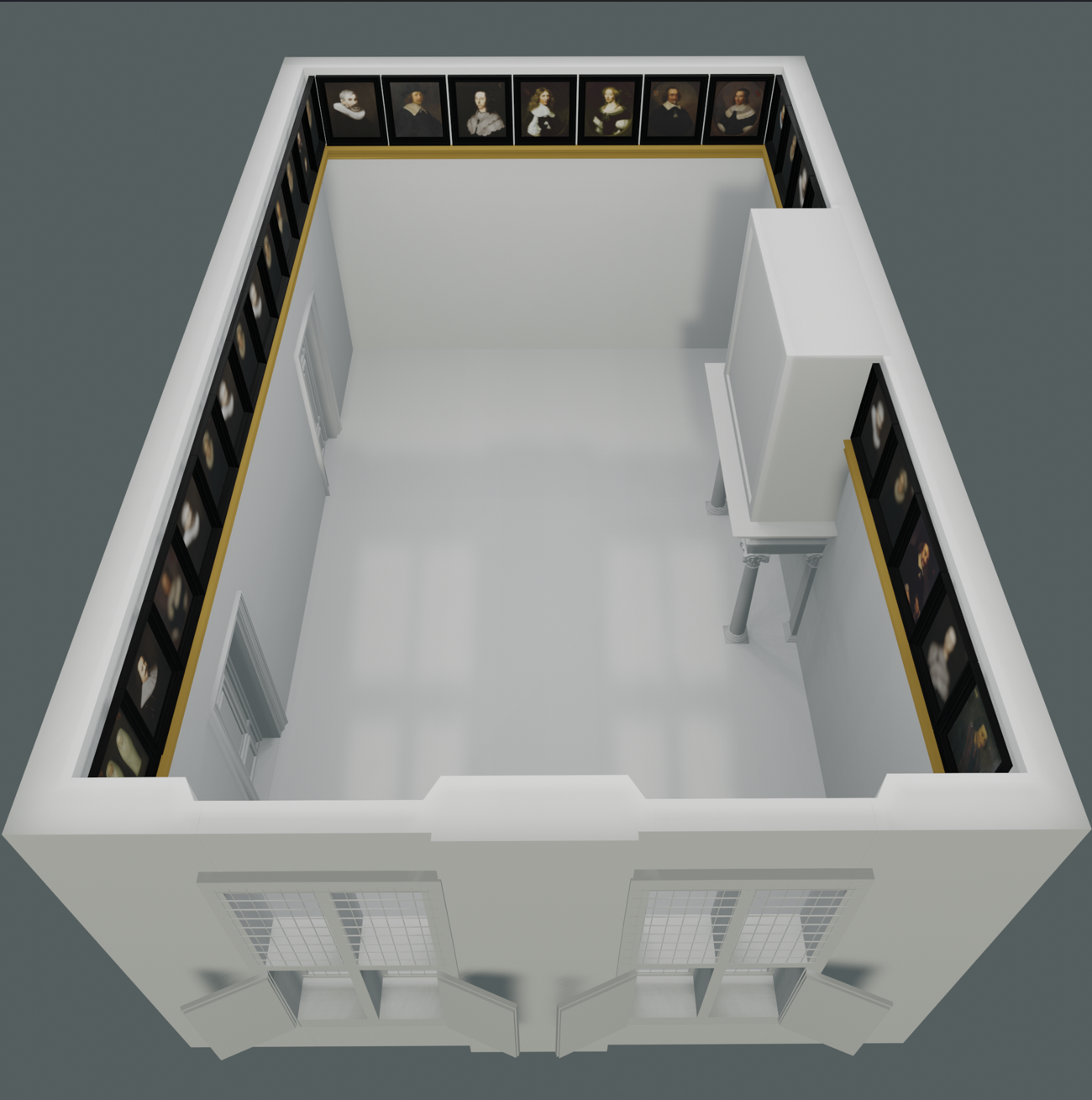
hanging above a gilded moulding in this room ('negen en twintig pourtraicten
vande familie, hangende boven de vergulde lijst')
This room was on the upper floor, adjacent to and directly connected to the library. While the front rooms on the bel-etage (namely the entrance hall – voorhuis, the small reception room – kleijne zijldekamer, and the large reception room – groote tapijte kamer), projected the status of the household to visitors entering the house, the groote kamer told the story of this family, this time for the select group who was allowed to access this space. This room was filled with paintings and furniture pieces, including the cabinets where Pieter’s collection of coins and commemorative medals was on display (see Li and Piccoli 2024 for the analysis of this room).
The detailed list of items recorded in this room in Pieter de Graeff's inventory included a reference to twenty-nine portraits that hung above a gilded moulding:

Research conducted by the author and by art historian Weixuan Li has identified a recurrent pattern of size and poses across several portraits of the De Graeff and Bicker families included in the image database of the Netherlands Institute for Art History (RKD). This, combined with the known measurements of the room, has made it possible to test whether twenty-nine portraits of that size would fit into the room. As the 3D reconstruction shows, they would perfectly fit the upper level of the room walls, above the doors, creating a 'gallery of ancestors' that displayed the family's legacy:

Some of the paintings have a painted oval frame, as in fashion since ca. 1670. Interestingly, also Jan de Graeff (1673-1714), one of Pieter and Jacoba’s children who lived in this house after his father died had himself portrayed in a similar fashion (dated around 1700, private collection, see RKD image: 231281). Similarly, Jan’s son Gerrit and his wife Elisabeth Lestevenon, who lived at the Herengracht after Jan, have similar portraits (private collection, RKD images 144314 and 144315, respectively). This grants the conclusion that this 'gallery of ancestors' was still used and updated into the 18th century. Preserving the family history was a significant task for Pieter de Graeff, who drafted a manuscript detailing their lineage, personal accounts and possessions. This manuscript was then updated by the following generations (see Piccoli, Pieter de Graeff, p. 5).
If you're reading this article while following Tour 4, you can view the reconstruction of the groote kamer and access information about the portraits in the following steps of the tour; alternatively, you can view the room by switching on only the annotation set "Extra - portraits" amongst the annotation tags. If they aren't already visible at the bottom of your screen, click on this icon to make them appear ![]()
Please note that the order of the portraits in the reconstruction hypothesis is conjectural. Portraits for which no existing painting could be identified with certainty are blurred to indicate their presence while highlighting their missing identification.
References:
C. Piccoli, Pieter de Graeff (1638-1707) and his treffelyke bibliotheek (Brill, 2025)
W. Li and C. Piccoli (2024). 'Placing Value in Domestic Interiors. 3D Spatial Mapping of Pieter de Graeff and Jacoba Bicker’s Home Art Collection' BMGN - Low Countries Historical Review, 139(2), 4-37.
Written by Chiara Piccoli